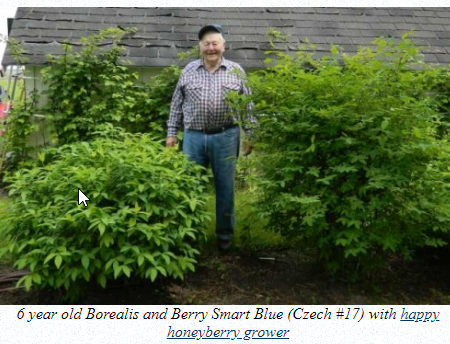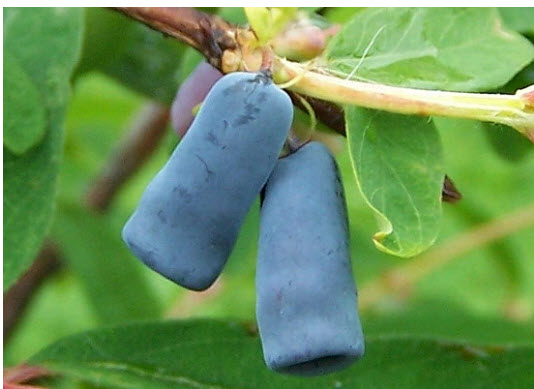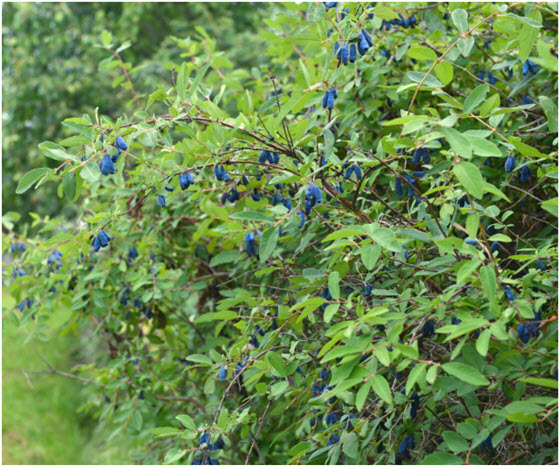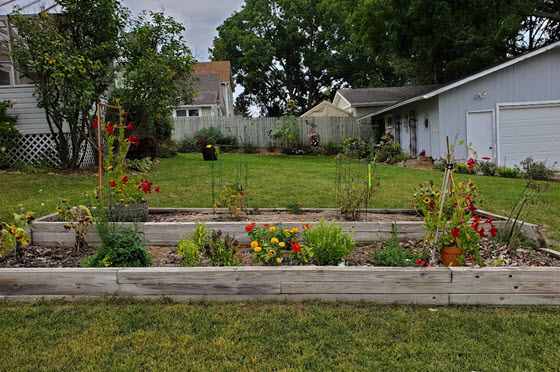Click below to listen to my 2 min. Garden Bite radio show/podcast: Honeyberry bushes 2022
Back in January of 2020 I briefly talked about a berry I’d never heard of called Honeyberry. It was in a plant catalog and I was very intrigued as it’s rated zone 2 and supposed to taste wonderful.

Honeyberries seem to be all the rage now in 2022. The University of Saskatchewan began breeding honeyberries(haskap) in 2002. Using lines from Russia, Japan and the Kuril Islands north of Japan, this program is producing fruit that is sweeter and superior in taste to many other honeyberry varieties on the market, as well as being larger and more easily detachable from the plant.
It takes YEARS to breed plants for certain characteristics that affect the fruit, the hardiness and overall health of the plants.
Honeybearusa.com has a wealth of information as well as varieties for purchase. They’re located in Bagley, Minnesota, 25 miles north of the headwaters of the Great Mississippi River. Their website is not high tech but, again, filled with information. They clearly spend more time on their PLANTS than their site, which is exactly what you want. They carry many varieties.
The plants can handle 55 below zero with blossoms that withstand 20 degrees F. Holy cow, that’s tough for something named Honeyberry!!

The berries look like elongated blueberries but the flavor seems to be a sweeter cross between blueberries, raspberries and blackberry. But everyone says it’s actually hard to describe! Native Foods Nursery, out of Oregon, carries native edibles for home gardeners.
You need two different compatible varieties for cross pollination and fruit set.
The berries turn purply blue before they’re fully ripe so you need to allow them to continue ripening. The shrubs grow from 3 to 8 ft. tall depending on the variety.

Honeyberries have a higher level of antioxidants and are super pollinator friendly. These shrubs can live 50 plus years and prefer clay soil to sand. In our cold climates, they’re best planted in full sun.
I’m really considering planting a couple of these in my landscape. In fact, my raised bed might be the perfect spot! Although I did read something about them not having a southern exposure due to the heat… I think mine would be fine…

